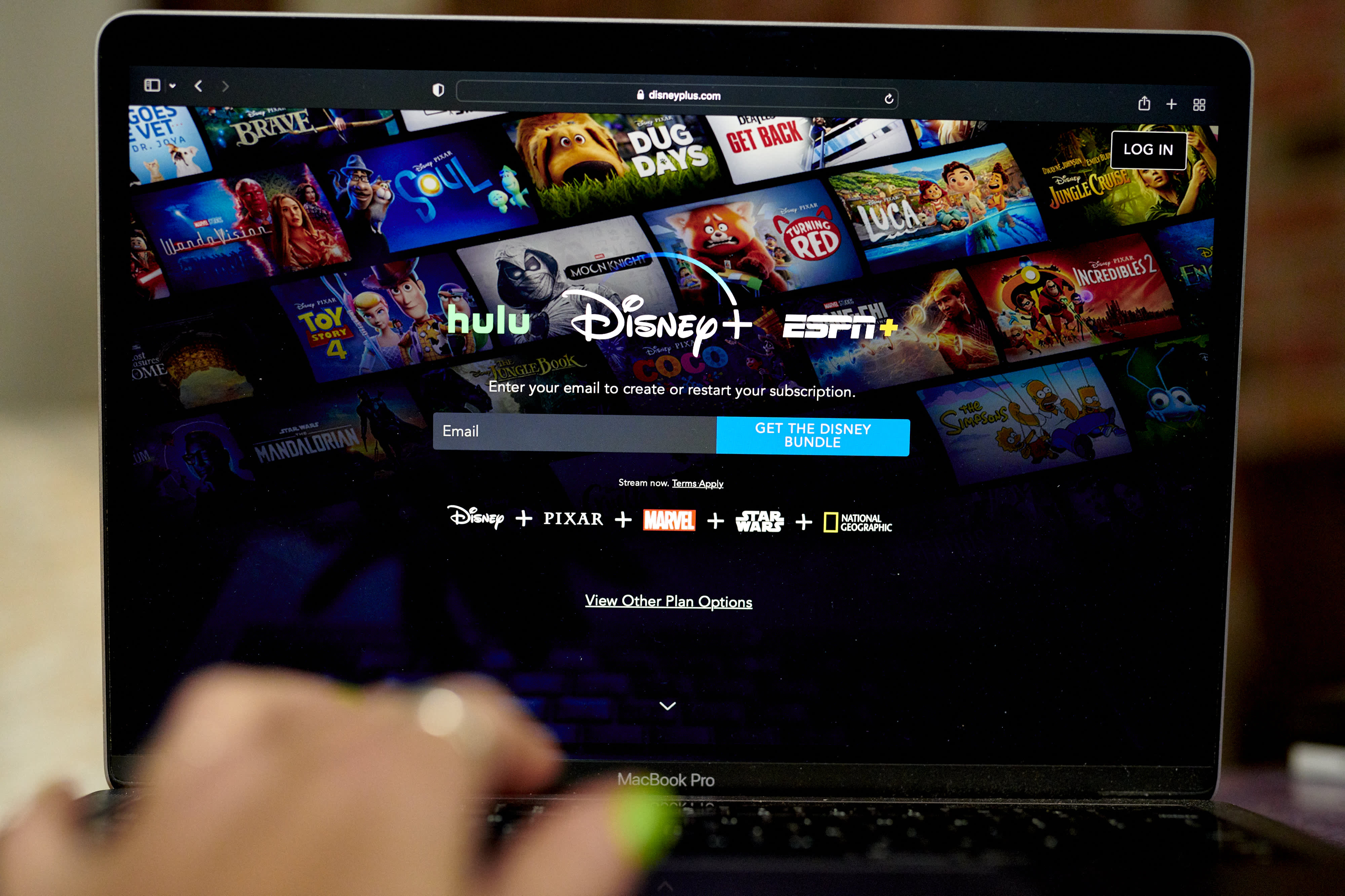
The Disney+ website on a laptop computer in the Brooklyn borough of New York, US, on Monday, July 18, 2022.
Gabby Jones | Bloomberg | Getty Images
Disney might be proving the world’s most famous investor wrong.
Last year, Warren Buffett, “The Oracle of Omaha,” told CNBC’s Becky Quick he had no faith in the business of streaming video.
“Streaming … it’s not really a very good business,” Buffett said on April 12, 2023. “The shareholders really haven’t done that great over time.”
Buffett wasn’t lying. Legacy media companies such as Comcast’s NBCUniversal, Disney, Paramount Global and Warner Bros. Discovery have all underperformed the S&P 500 since Jan. 1, 2022, largely due to billions of dollars lost while launching subscription streaming services.
But Disney’s quarterly earnings results, released Thursday, indicate streaming is about to become a much better business.
A combination of pulling back on content spending and steadily increasing Disney+, Hulu and ESPN+ subscribers hasn’t just turned streaming into a profitable business, it’s actually turned streaming into an even better business than traditional TV, according to Disney Chief Financial Officer Hugh Johnston.
For Disney’s fiscal 2025, streaming will generate enough operating income to offset the parallel decline in operating income from linear TV, Johnston said in an interview.
Disney projects entertainment direct-to-consumer operating income will increase by about $875 million next year over fiscal year 2024. That would put the division at over $1 billion in operating income for the coming fiscal year.
“I think we’re well-positioned if [consumers] decide to stay in linear for longer, and I think we’re well-positioned if they decide to move over to the streaming side,” Johnston said during Disney’s earnings conference call.
Those results are borne out in Disney’s earnings. Disney’s combined streaming businesses improved their profitability in the company’s fiscal fourth quarter, posting operating income of $321 million. For the year, Disney’s entertainment streaming platforms (Disney+ and Hulu) made $143 million in operating income. Last year, the entertainment platforms lost $2.5 billion.
Streaming strikes back
The bearishness toward traditional media hasn’t been isolated to streaming’s near-term losses.
Investors have also largely bought into the premise that subscription streaming video won’t be able to replace the billions in profit from linear TV, cable and broadcast, that the companies have lived off for decades.
The traditional pay-TV business has been phenomenal for many reasons, but two stand out: Media companies get paid monthly regardless of whether people actually watch, and churn rates for traditional pay TV were traditionally extremely low — at least, until the invention of streaming. In the last decade, tens of millions of Americans have canceled their cable TV subscriptions.
In the new streaming era, it’s far easier to cancel a particular service at any given time. Instead of having to cancel TV entertainment in its entirety, a consumer can easily pick and choose from a handful of streaming services in any given month.
Consequently, media companies no longer religiously get paid each month. Now, only consumers that want specific programming are paying, and only for as long as they want it.
Still, Disney’s forecast suggests those headwinds don’t necessarily mean streaming will be unsuccessful as a long-term replacement product for cable. Future bundles or consolidation may help mitigate churn. As companies shift their best content to streaming, canceling services becomes less appealing.
Disney’s results follows strong streaming results last week from Warner Bros. Discovery. The company’s direct-to-consumer division delivered profit of $289 million, driven by an increase in global subscribers, higher advertising revenue and global average revenue per user. Warner Bros. Discovery’s flagship streaming service Max added 7.2 million global customers during the third quarter, bringing its total subscriber base to 110.5 million.
The end result may be a media industry that emerges from a rough few years stronger than investors feared. Disney shares rose 6.2% Thursday.
Disclosure: Comcast’s NBCUniversal is the parent company of CNBC.





